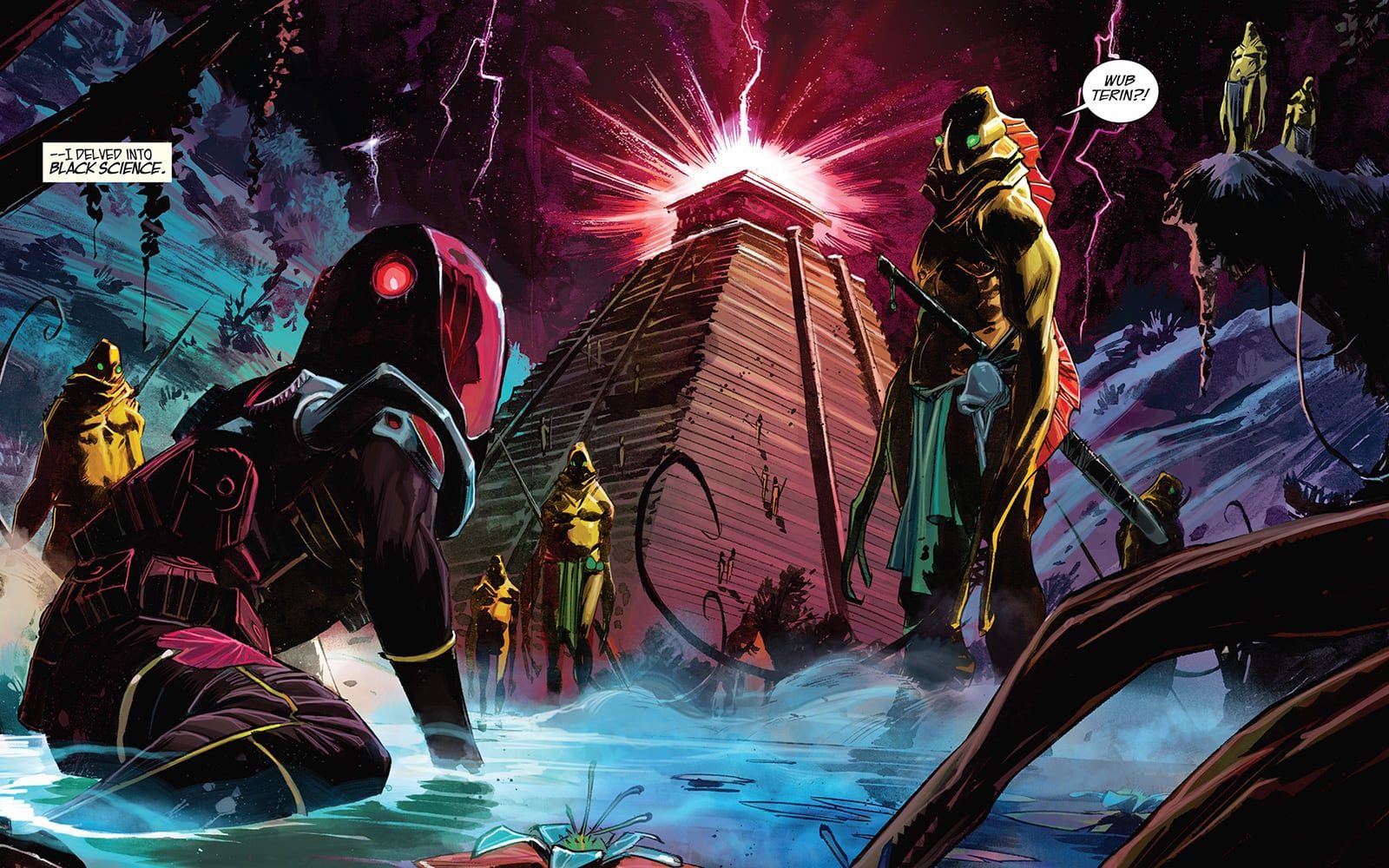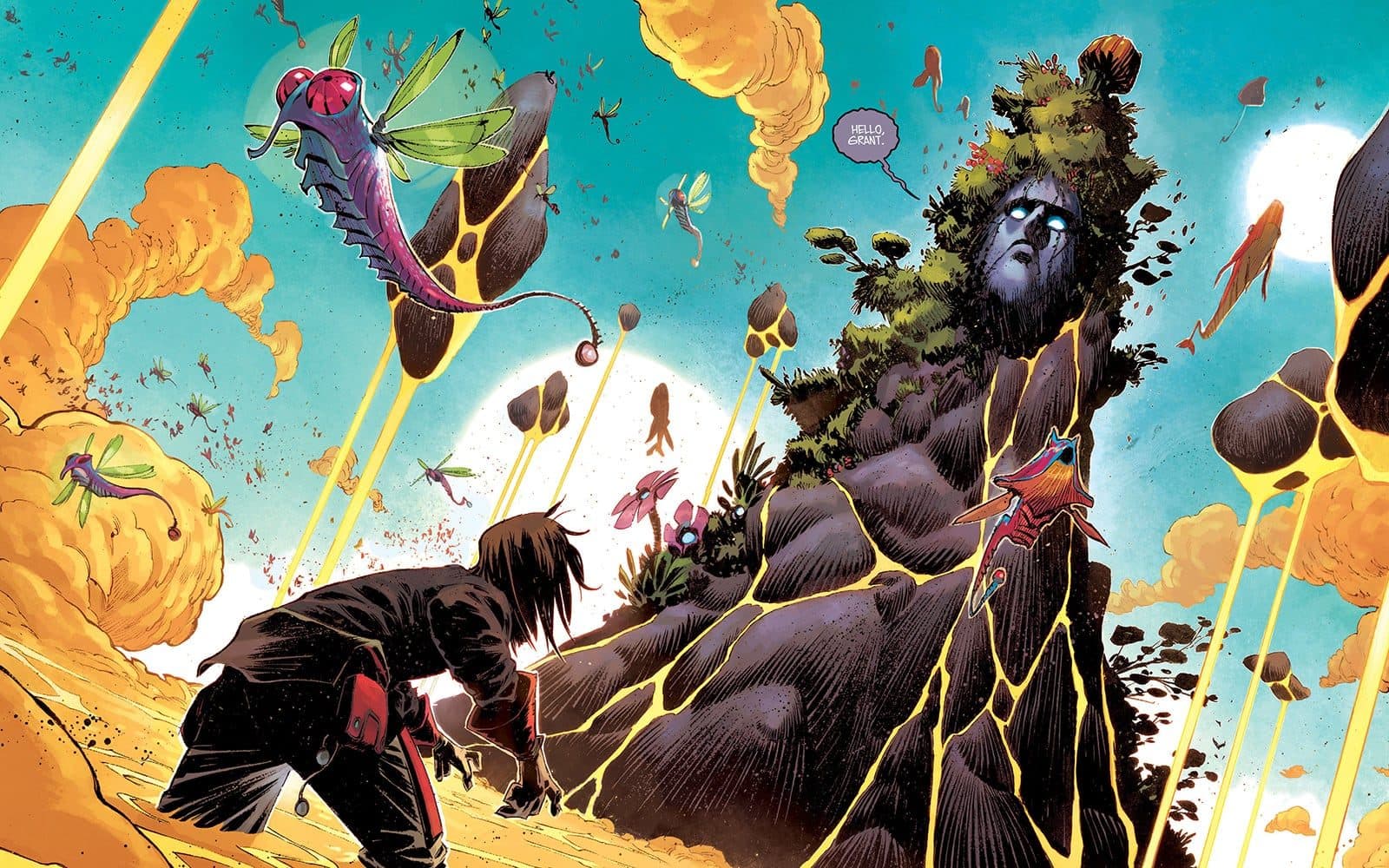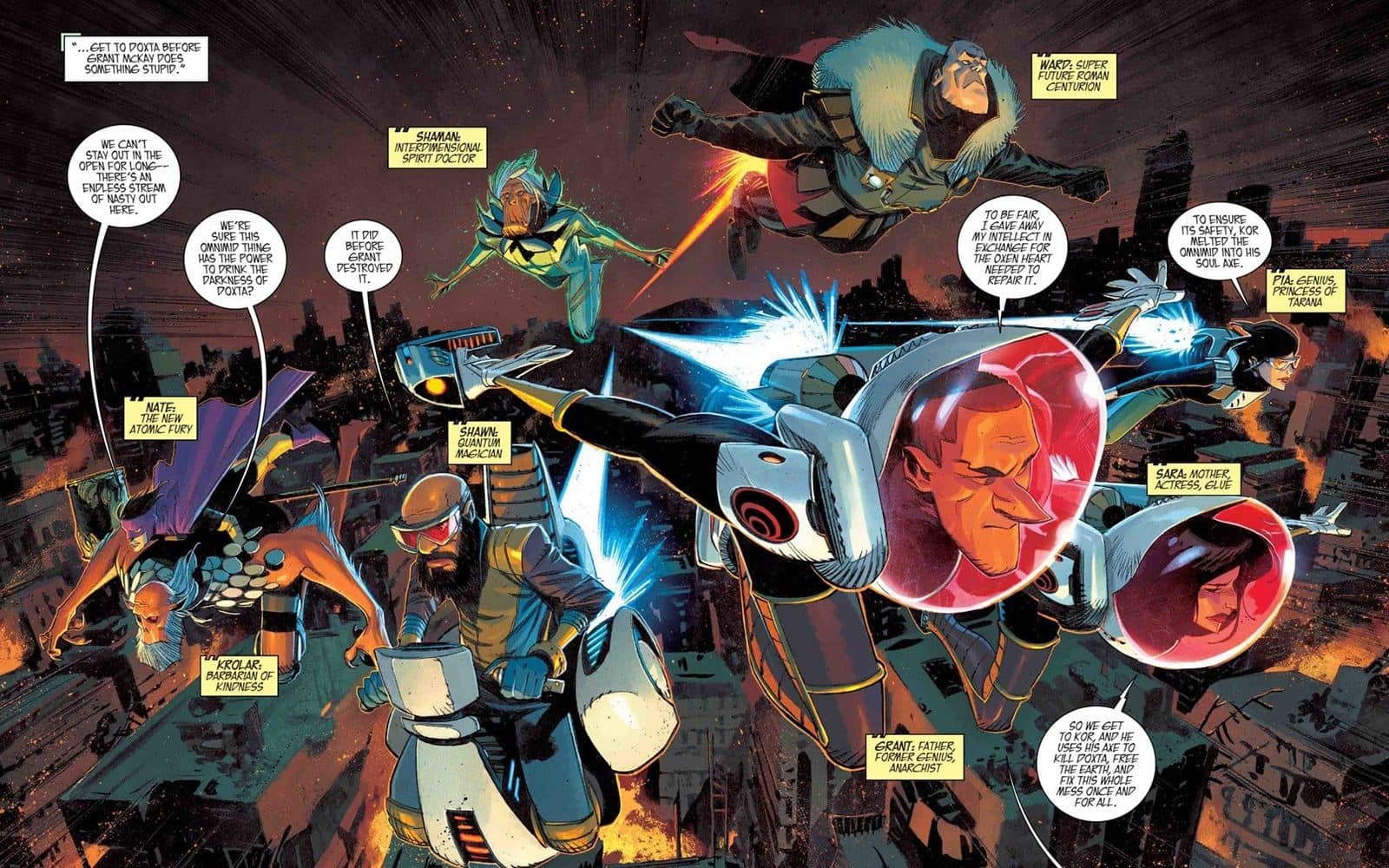Black Science Is a Mind-blowing Trip Through Alternate Realities & Family Dysfunction (Review)

As leader of the Anarchist League of Scientists, Grant McKay has lived his life according to one simple credo: “No authority but yourself.” He’s gone wherever his genius intellect — and massive ego — has led him, even to delving into the forbidden “Black Science,” consequences and authorities be damned. The culmination of all of this rebellion is the Pillar, an amazing device that allows people to travel throughout the infinite layers of realities that make up the Eververse.
McKay sees the Pillar as humanity’s salvation. With it, they can travel to countless other worlds in search of cures for disease, advanced technology, new energy sources, and other unimaginable scientific discoveries. But more importantly, the Pillar is vindication of McKay’s own arrogance and scientific recklessness.
Until everything goes horribly wrong, that is.
When sabotage causes the Pillar to activate unexpectedly, McKay, his team, and his two kids find themselves stranded in one of the Eververse’s countless realities, facing unimaginable threats and otherworldly dangers at every turn. And so begins Black Science, an absolutely mind-blowing comic by writer Rick Remender (Deadly Class, Punisher, X-Men) and artist Matteo Scalera (Deadpool, Incredible Hulk, Secret Avengers).
Note: The following contains potential spoilers for Black Science.

I’m hard-pressed to think of a series in recent memory where the creative team was so perfectly matched. Remender spins a rollicking tale of anarchist scientists, alien death cults, philosophical quandaries, and multi-generational family drama that’s spread across a dazzling array of worlds (both alien and strangely familiar) and blends pulp-y sci-fi and weird fantasy with wild abandon.
You occasionally get the sense that Remender’s scripts were a game of one-upmanship with his artist, but Scalera’s artwork proves to be up to the challenge, and then some. At times trippy and psychedelic (à la the cover art for some long-forgotten ’70s acid rock group), and at other times intense and action-packed, Scalera’s artwork easily keeps pace with Remender’s boundless world-building, giving shape and form to even the most bizarre of realities.
The result is a comic spectacle that leaves you wanting to breeze through the pages in order to keep up with the storyline but also to linger over every single, vibrant panel — colorists Moreno DiNisio and Dean White also deserve recognition for their work here — to make sure you haven’t missed any details.

It’s totally possible to enjoy Black Science as nothing more than a thrilling adventure as McKay and his fellow “Dimensionauts” make their way through the Eververse. They’re simply trying to get back home, but that means staying one step ahead of numerous foes: a nihilistic cult that wants to spread their zealotry to every reality with the Pillar’s help; a corrupt, multi-dimensional business cabal amassing untold wealth and power; energy specters seeking to possess the Eververse’s infinite populations; and even versions of themselves from other dimensions.
However, Black Science is also the story of a deeply flawed man’s desperate attempts to save his family. In his drive to create the Pillar, McKay abandoned his wife and kids, leaving them to fend for themselves while he was caught up in his experiments (and a pretty lab assistant). But being cast adrift in the Eververse forces McKay to confront his own selfish behavior, and realize his need to put things right.
Unfortunately, McKay’s family isn’t the only thing that the Pillar has endangered. During their journeys, the Dimensionauts discover evidence that the Pillar, their only hope of getting home, is also tearing the layers of the Eververse apart with each jump, potentially dooming every reality to oblivion. And so McKay, struggling to overcome his own worst tendencies, is faced with a horrible dilemma: save his family or save the Eververse.

While Black Science certainly focuses on McKay’s life and decisions, the series contains plenty of other compelling characters: McKay’s long-suffering kids, who must discover who they are apart from their father’s shadow; Rebecca, the aforementioned lab assistant that McKay was leaving his family for, and who’s haunted by terrible loss; Kadir, overseer of the Pillar’s development and McKay’s chief rival, who swerves between treachery and nobility; and the wise-cracking Shawn, whose idolization of McKay starts crumbling in light of the Eververse’s threats.
The attention paid to these characters and their arcs doesn’t take away from the series’ more action-oriented spectacle. Rather, the spectacle becomes all the more gripping because of how well Remender and his cohorts delve into the various Dimensionauts’ plights. Especially when they begin wrestling with the philosophical implications of their travels.
If there are a nigh-infinite number of alternate realities in which every decision has already been made, what value do your actions have? What’s the point of trying anything at all when countless other versions of you from countless other realities have also tried, and failed? Facing questions like these, Black Science’s characters find themselves wrestling with free will, determinism, and nihilism. This comes especially to the forefront in the series’ final issues, as McKay travels to the heart of the Eververse in hopes of finding an explanation for everything that’s happening.

The ending of Black Science is undoubtedly a bittersweet one. McKay is faced with one final decision: he can either betray his deepest ideals to live a simple, contented life or remain true to his convictions, regardless of the cycles of destruction that he may restart throughout the Eververse. In keeping with its trippy nature, Black Science explores both possibilities in a clever way, though which one is “canonical” will ultimately depend on whether you consider McKay a deeply flawed man who tries to do what’s right or a narcissist who’s blind to his own propensity for chaos.
Black Science crams in a lot of twists and turns, especially in its final issues — from shifting antagonists to revelations concerning the Eververse’s true nature. And frankly, not all of them work equally well. The final villain is a bit underwhelming compared to the other evils that the Dimensionauts encounter during their travels (I’m partial to the alien millipede death cult, myself) and I wish Remender had taken a few more panels to explore the ramifications of McKay’s discovery at the Eververse’s core.
That being said, it’s impossible to not admire the sheer scope of what Remender, Scalera, et al. have set out to accomplish with Black Science. To paraphrase Chris Vognar, Black Science may be too ambitious for its own good at times, but ambition and imagination — of which Black Science has enough to spare for ten comic series — will always trump mediocrity. And that’s true regardless of whatever layer of the Eververse you call home.
Click here to read the first issue of Black Science.